- Home
- slideshows
- miscellaneous
- Apple is killing its most-hated app, iTunes. Here's how it went from a popular music player to an outdated relic.
Apple is killing its most-hated app, iTunes. Here's how it went from a popular music player to an outdated relic.
Apple released iTunes in 2001 as a "jukebox" software that allowed Mac users to import songs, convert them to MP3s, and store them.

"iTunes is miles ahead of every other jukebox application, and we hope its dramatically simpler user interface will bring even more people into the digital music revolution," Steve Jobs said.
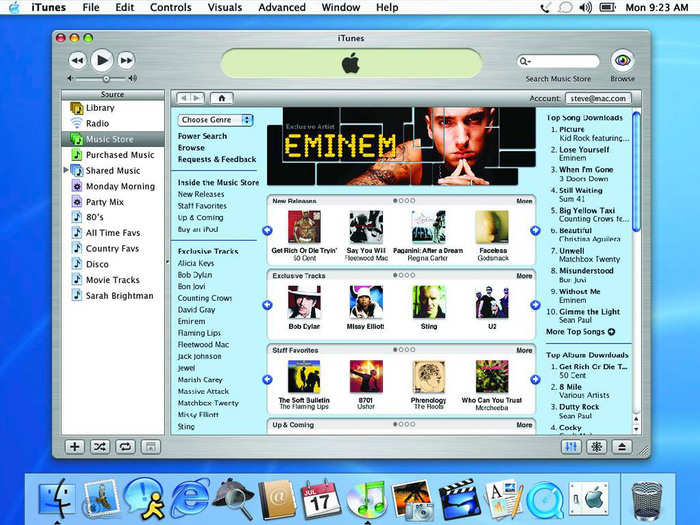
Source: Apple
In October 2001, Apple released the original iPod, which automatically synced with iTunes. “With iPod, listening to music will never be the same again,” Jobs said.

In the press release, Apple called the iPod "a breakthrough MP3 music player that packs up to 1,000 CD-quality songs into an ultra-portable, 6.5 ounce design that fits in your pocket."
The iTunes Music Store launched in 2004, with thousands of songs available for $.99. "Consumers don't want to be treated like criminals and artists don't want their valuable work stolen. The iTunes Music Store offers a groundbreaking solution for both," Jobs said.
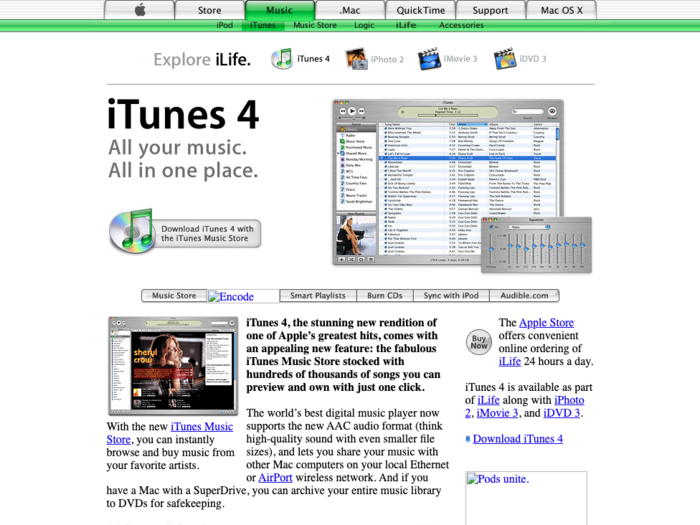
The iTunes Music Store made iTunes a model for legally buying and downloading music, The Verge observed. "The iTunes Music Store offers the revolutionary rights to burn an unlimited number of CDs for personal use and to put music on an unlimited number of iPods for on-the-go listening," said Steve Jobs in the press release.
Apple dominated the online music sharing space so completely that musicians like Thom Yorke of Radiohead accused Apple of making "all content, including music and newspapers, worthless, in order to make their billions."
iTunes also became available on Windows in 2004, making it available to users of the world's largest operating system for the first time. Jobs called it "probably the best Windows app ever written."
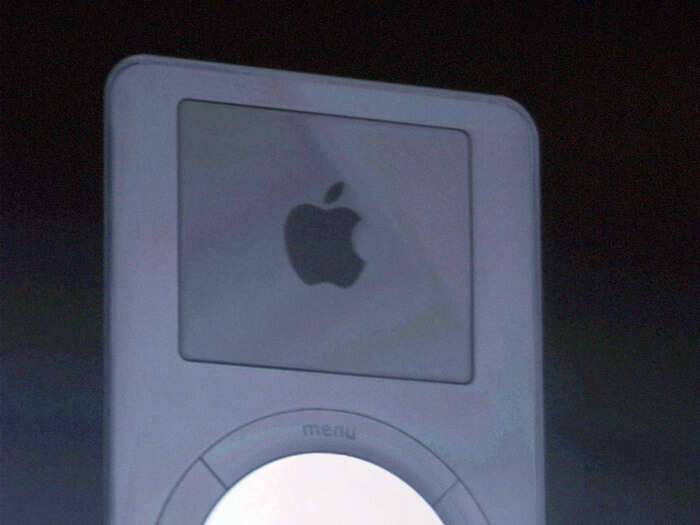
Source: Macworld
iTunes 5 and 6 were primarily bug fixes, but they added podcast and video support in 2005 and 2006, respectively.

In 2006, iTunes 7 introduced games, gapless playback, and more, as Apple also released the first iPhone. By this point, the software supported iPod Classic, Shuffle, Touch, Nano, and iPhone.
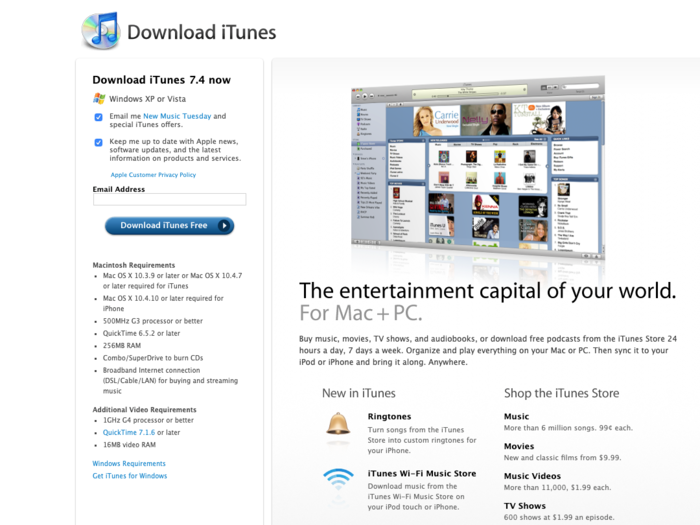
Post-iTunes 7, the software kept getting more confusing, and criticisms became more common as it evolved from a music player to a multimedia platform. It was even briefly home to Ping, "a social network for music" that was replaced within a year.
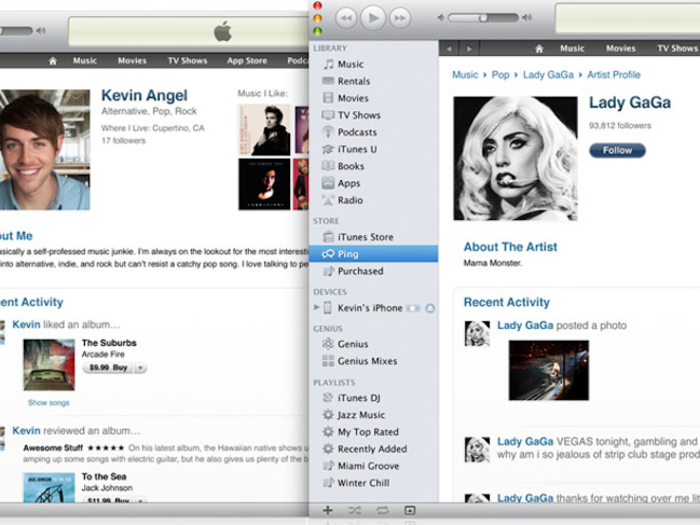
Ping was reportedly supposed to connect with Facebook, but users pointed out that it was difficult to use, with no alerts or notifications when friends reacted to you.
In 2012, redesigned iTunes 11 left users confused about how to access and organize their content, which could now include, music, podcasts, TV shows, and movies.
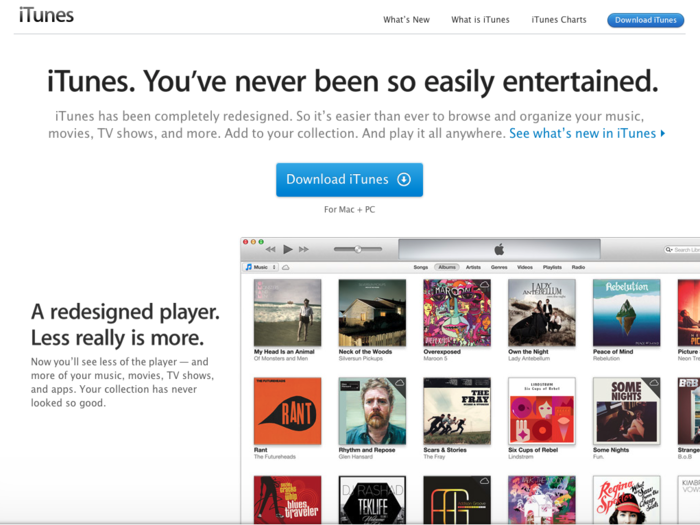
The company also introduced iTunes Radio and iTunes in the Cloud, letting users store their music library in the cloud.
Apple also launched iTunes Match, a streaming service, along with the Genius Sidebar, which users found confusing. When he originally launched iTunes, Jobs said of other music apps "They are too complex. They are really difficult to learn and use," but now that was becoming true of iTunes.

In 2014, Apple redesigned the software again for iTunes 12, again confusing users and disorganizing some carefully-curated music collections with iCloud Music Library.
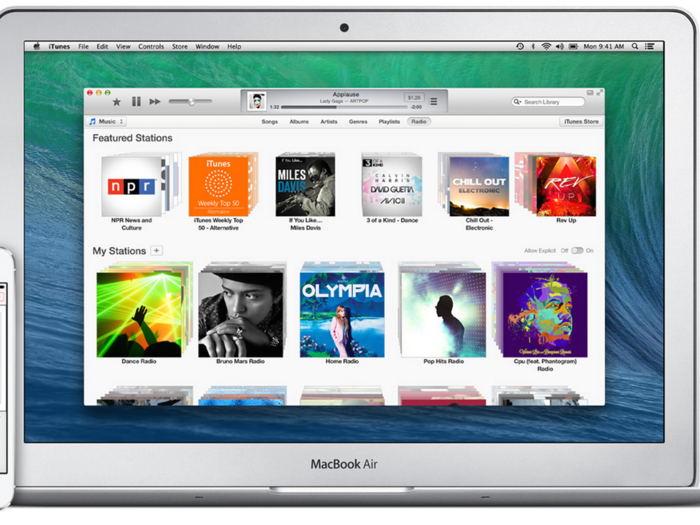
Source: MacWorld
Apple finally entered the streaming game in 2015 with Apple Music, which was a standalone service, but confusingly also lived in the same iTunes Mac app as. It is its own app in iOS, however, separate from the music player.
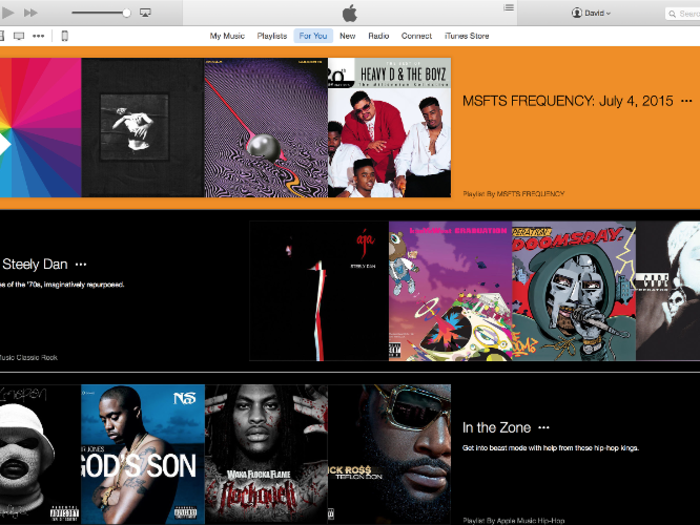
In the press release, music producer Jimmy Iovine said "Online music has become a complicated mess of apps, services and websites. Apple Music brings the best features together for an experience every music lover will appreciate," although Apple did not respond specifically to complaints about the clutter and complications of iTunes.
Some critics say iTunes was doomed from that point on. "People couldn't figure out the new, Frankensteinian hybrid. Which of their songs were hosted in the cloud? Why did they need to re-enter their Apple ID every time they wanted to play an album? Where were their downloads going?" Kevin Roose wrote in the New York Times.
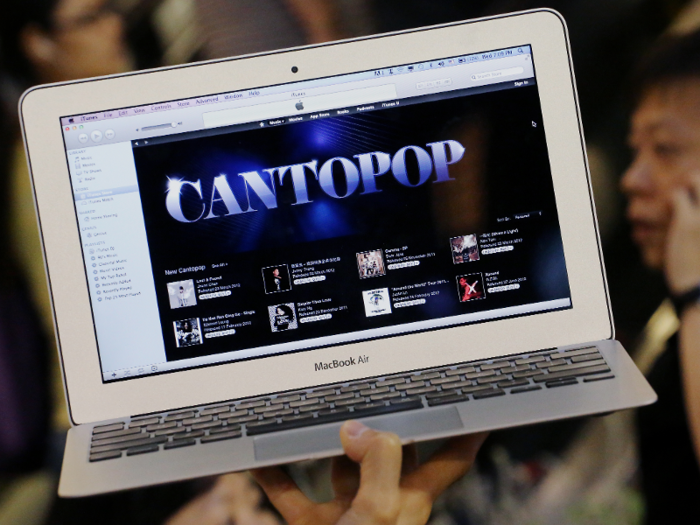
Source: New York Times
Apple blogger Marco Arment called Apple Music a "hellstew," and the New York Times called late iTunes "a bloated, buggy nightmare." Problems with Apple Music inevitably affected the iTunes experience as they were tied together in the same app.
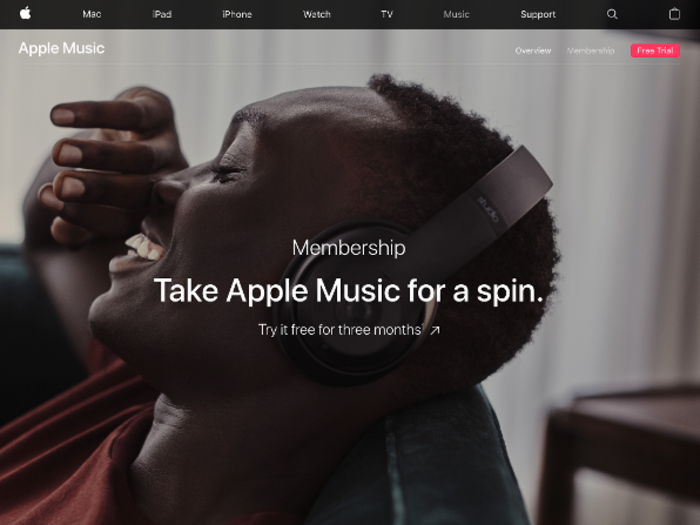
Source: Marco.org
Across the Internet, the consensus was that Apple put too many features into iTunes, but none of them worked very well. Verge called it "Apple's most hated app" and Farhad Manjoo wrote at Slate in 2012 that "Apple’s horrible, bloated program needs to die."
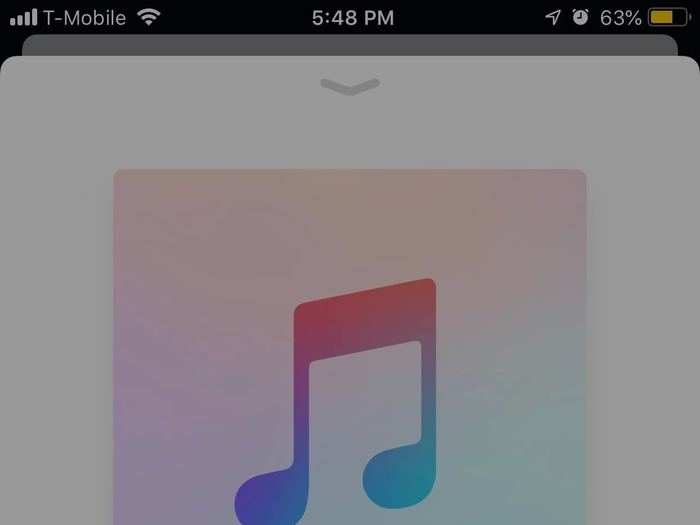
Now, iTunes is no more. Customers stream rather than buy music, and even physical music sales overtook iTunes sales early this year. Ebooks and podcasts can be downloaded directly onto devices and setting up iPhones no longer requires a link with the software, so iTunes is no longer the hub it once was.
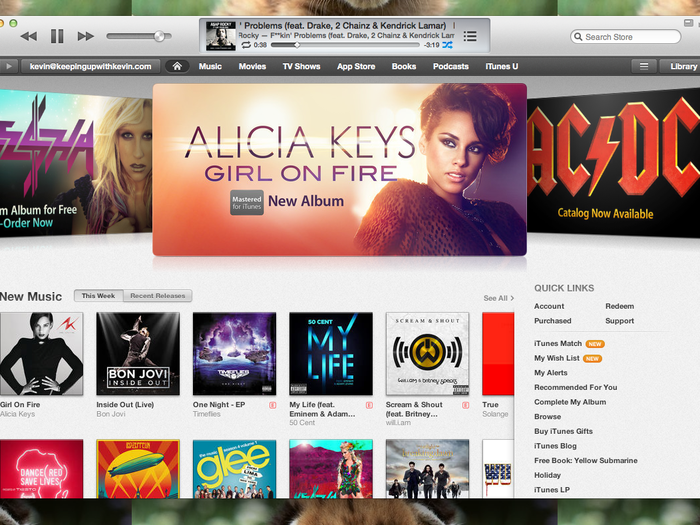
Source: 9to5Mac
Popular Right Now
Popular Keywords
Advertisement